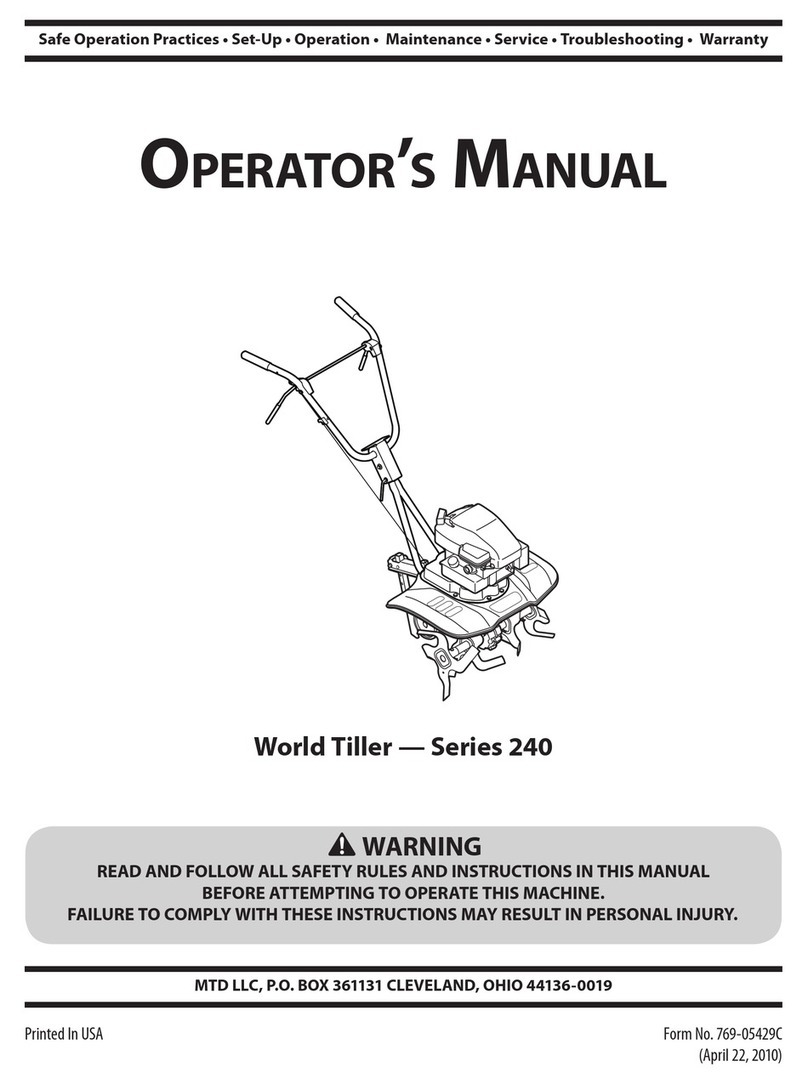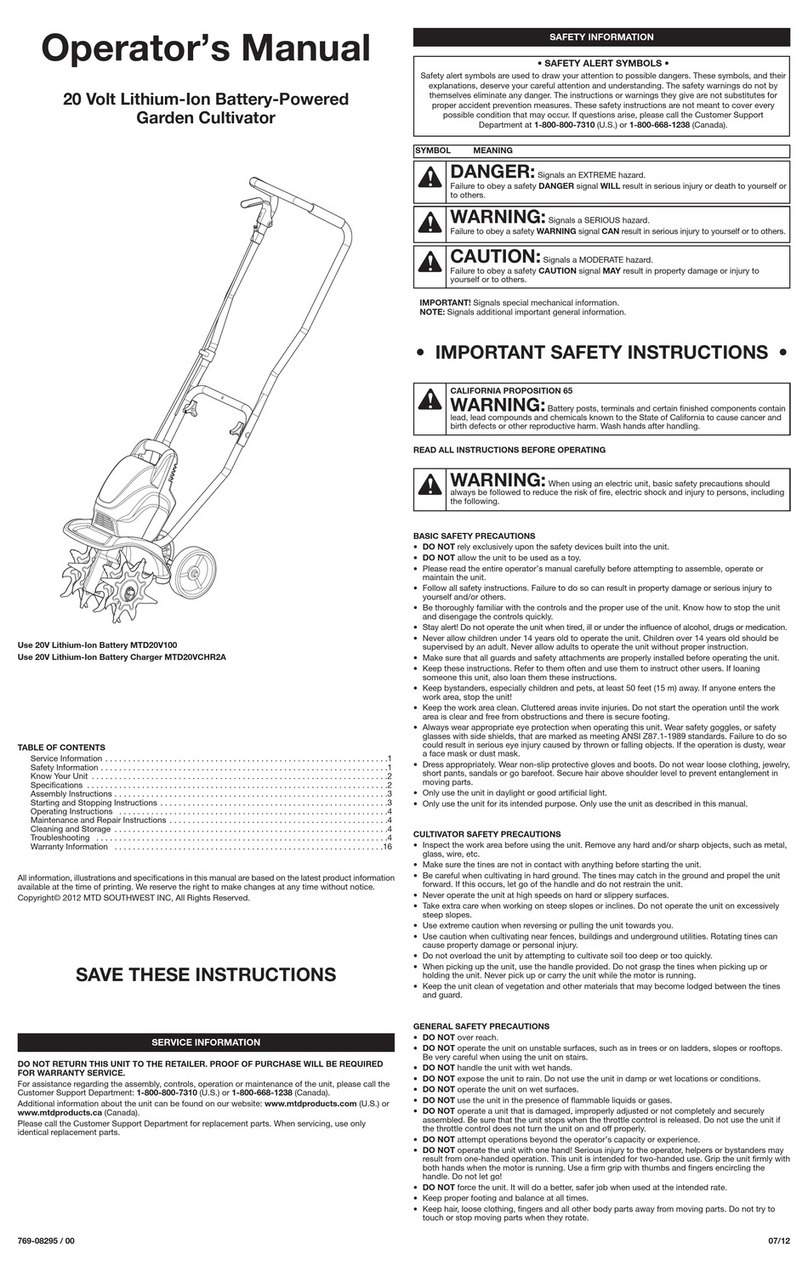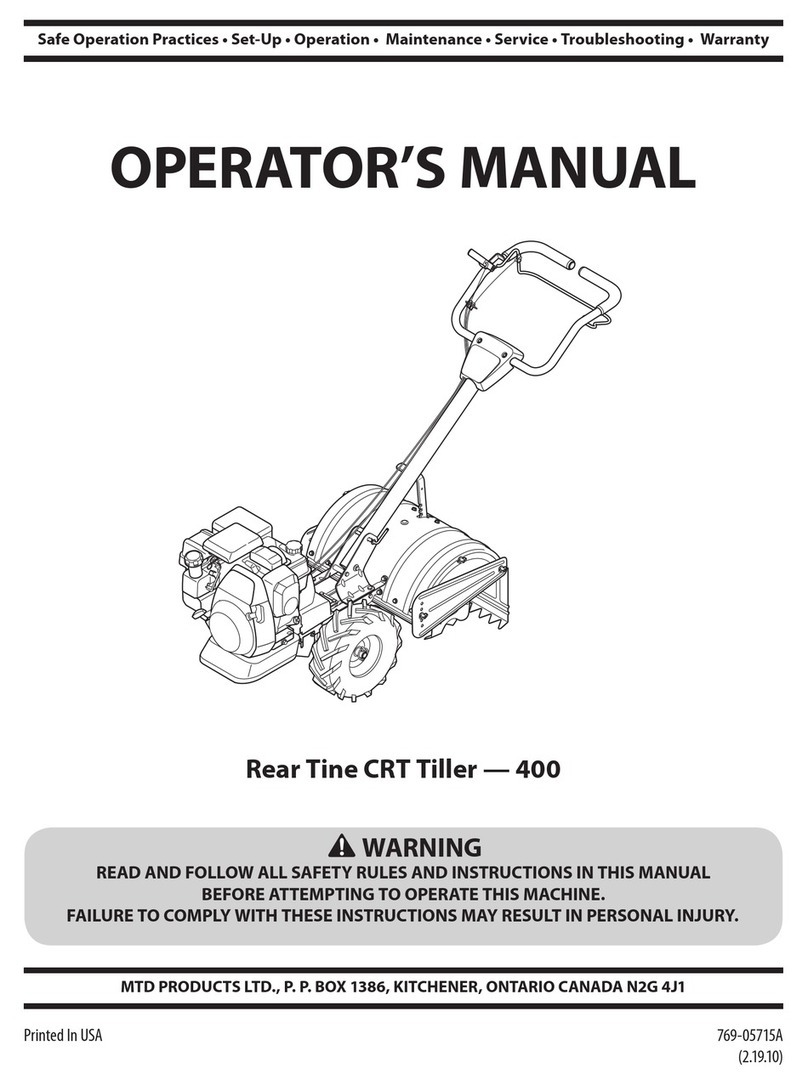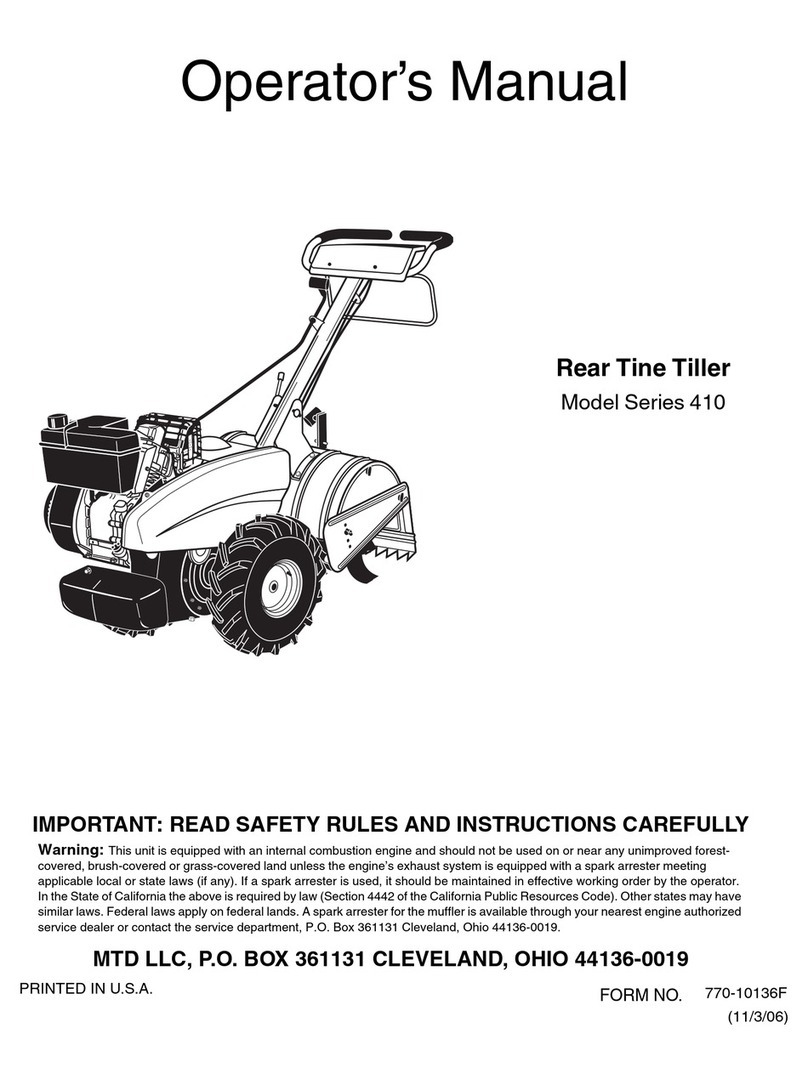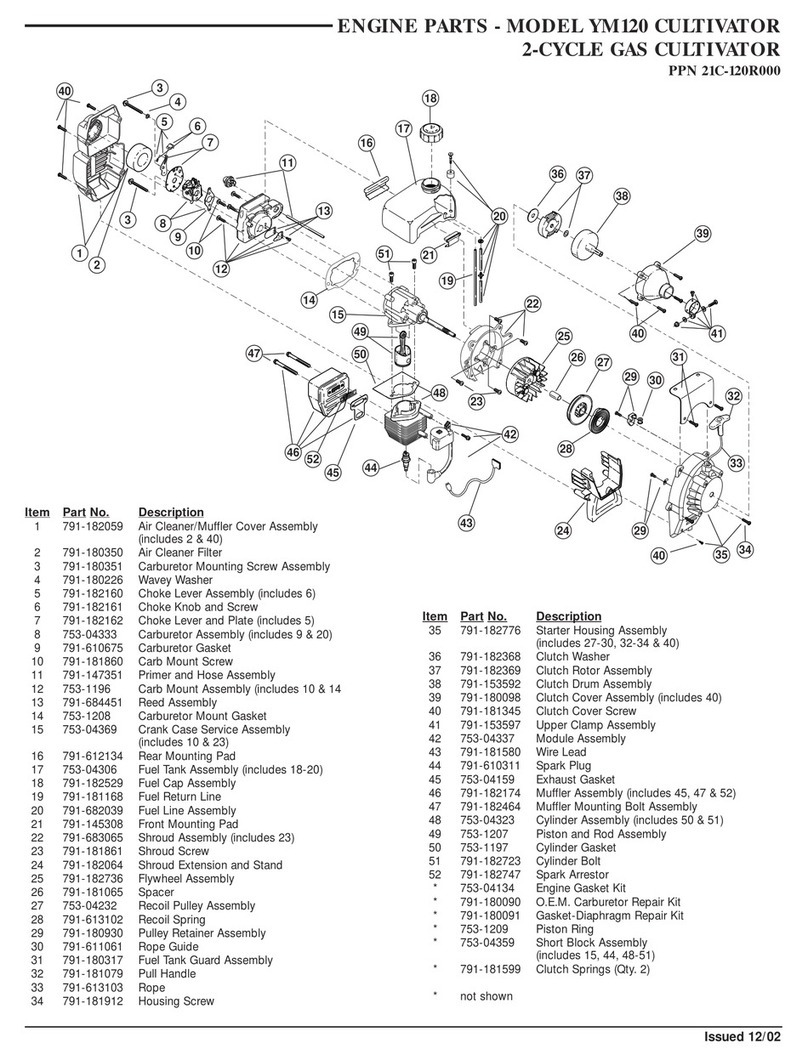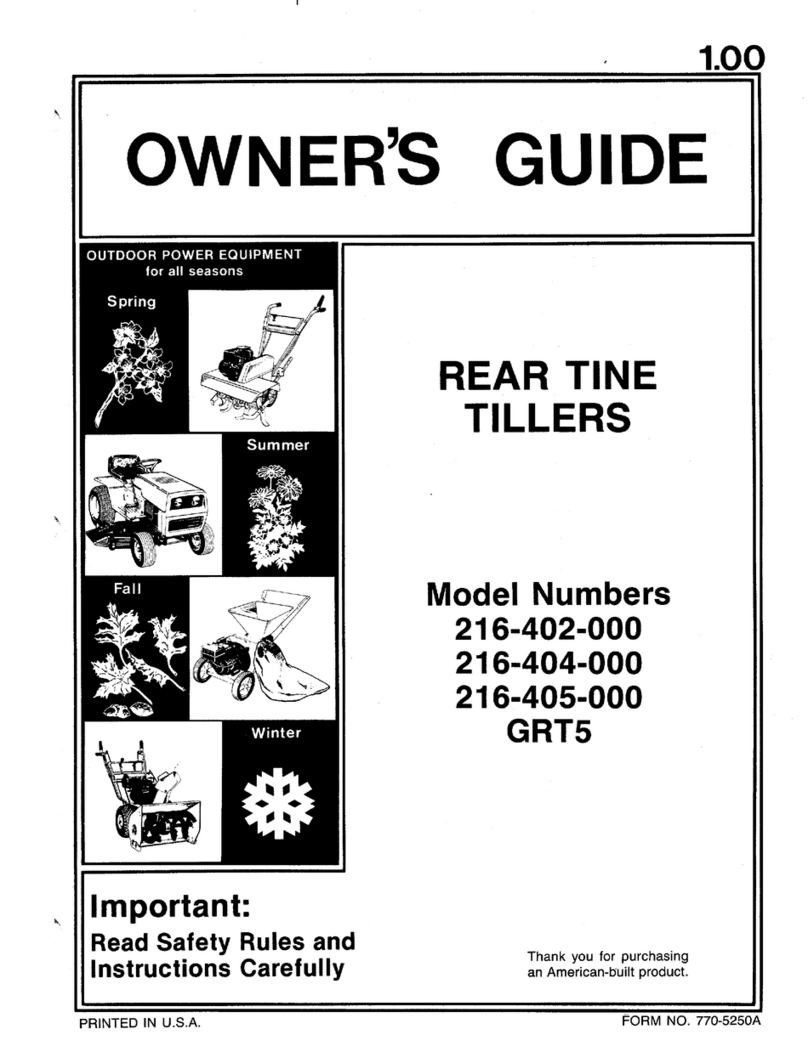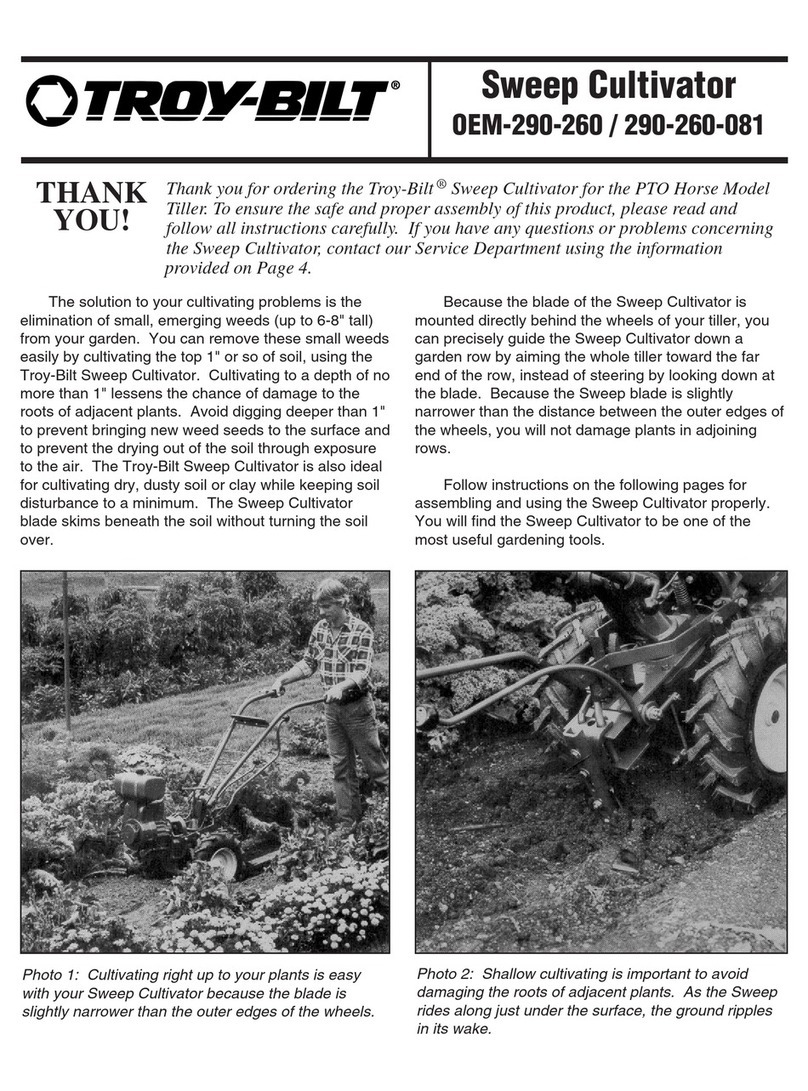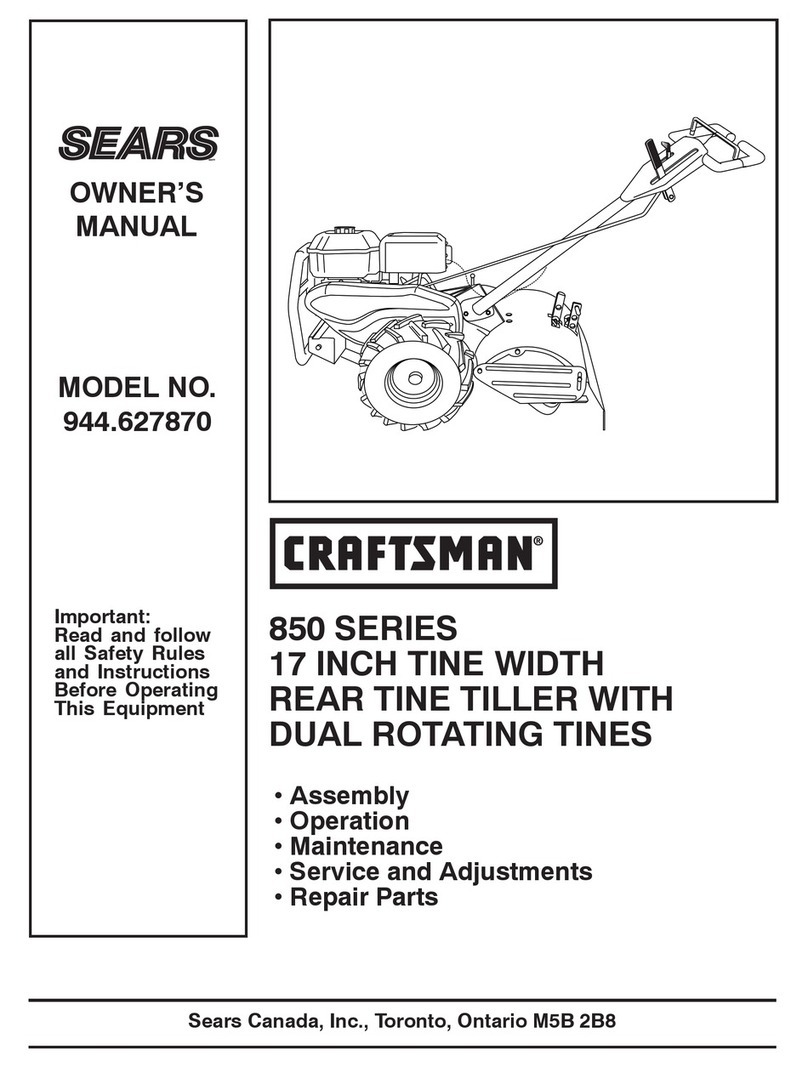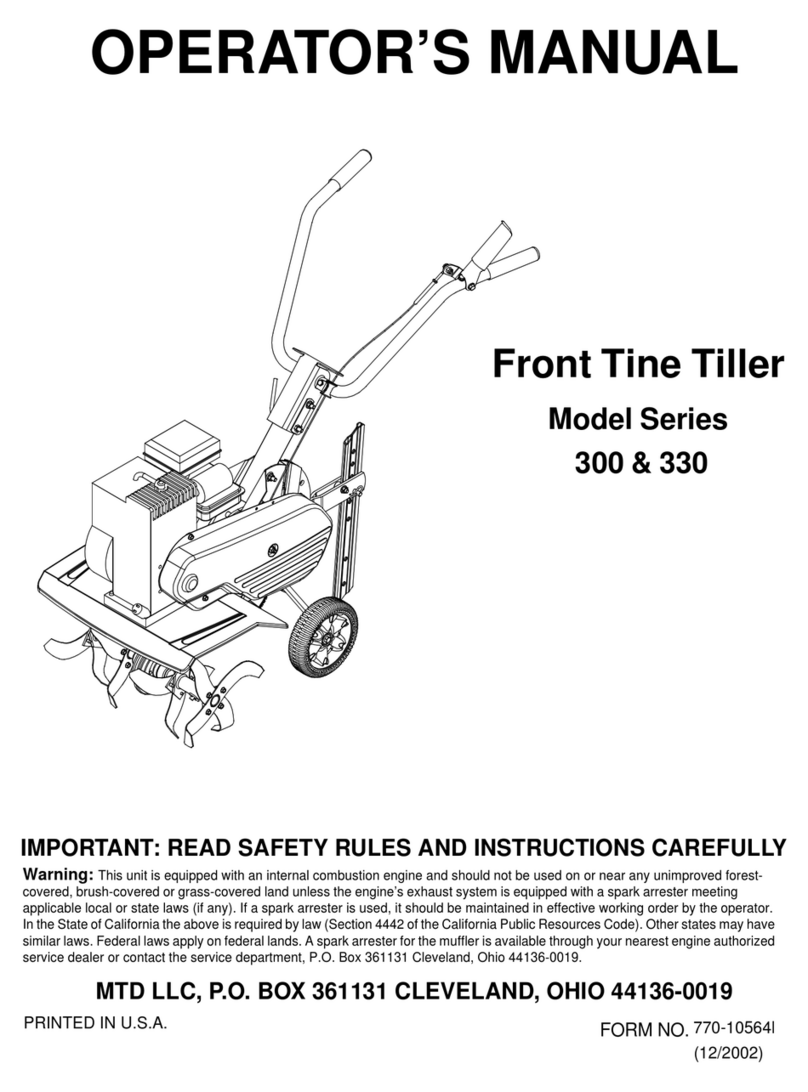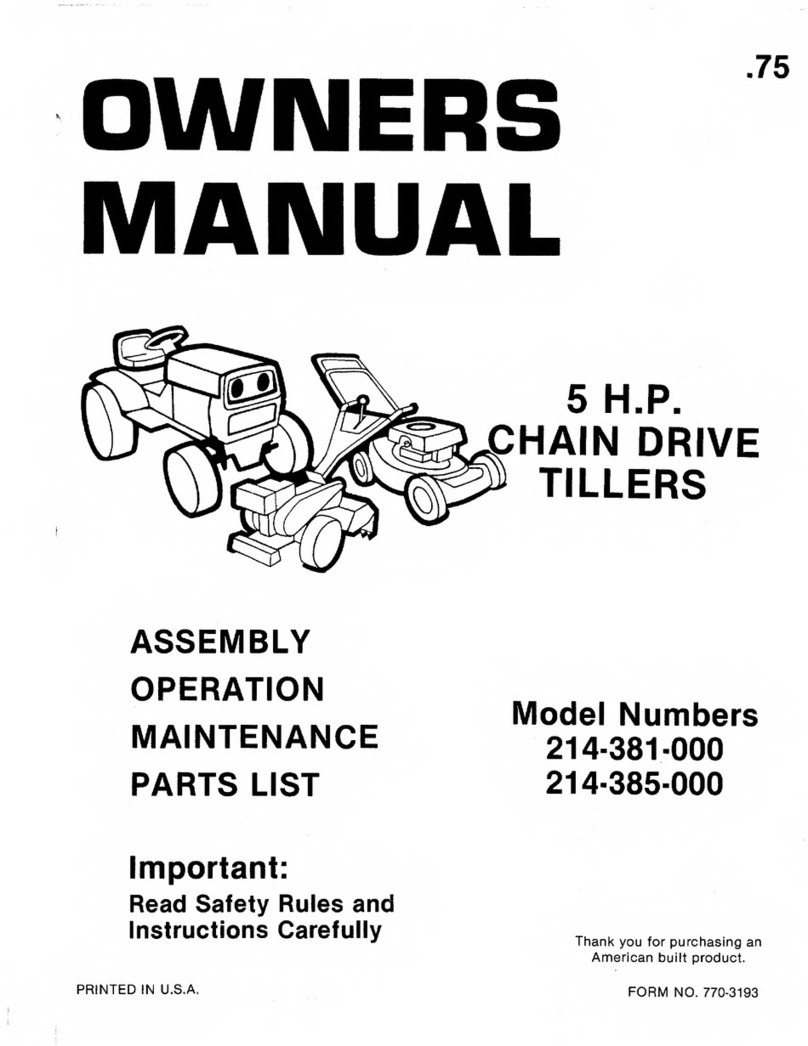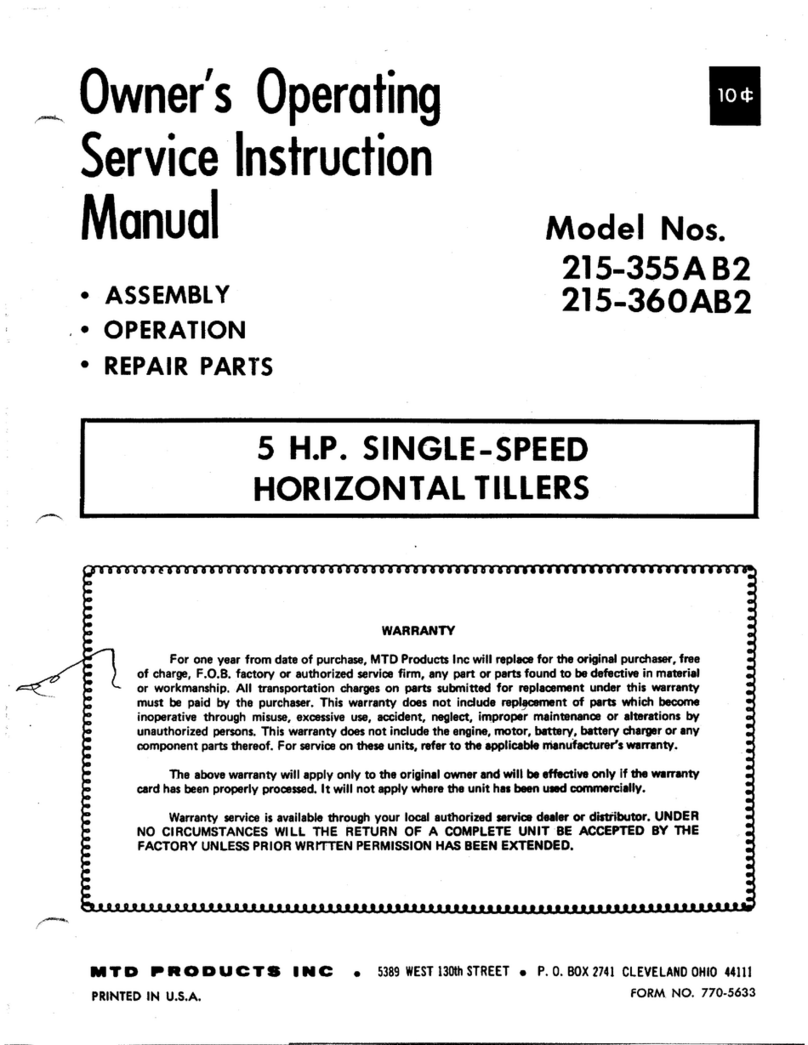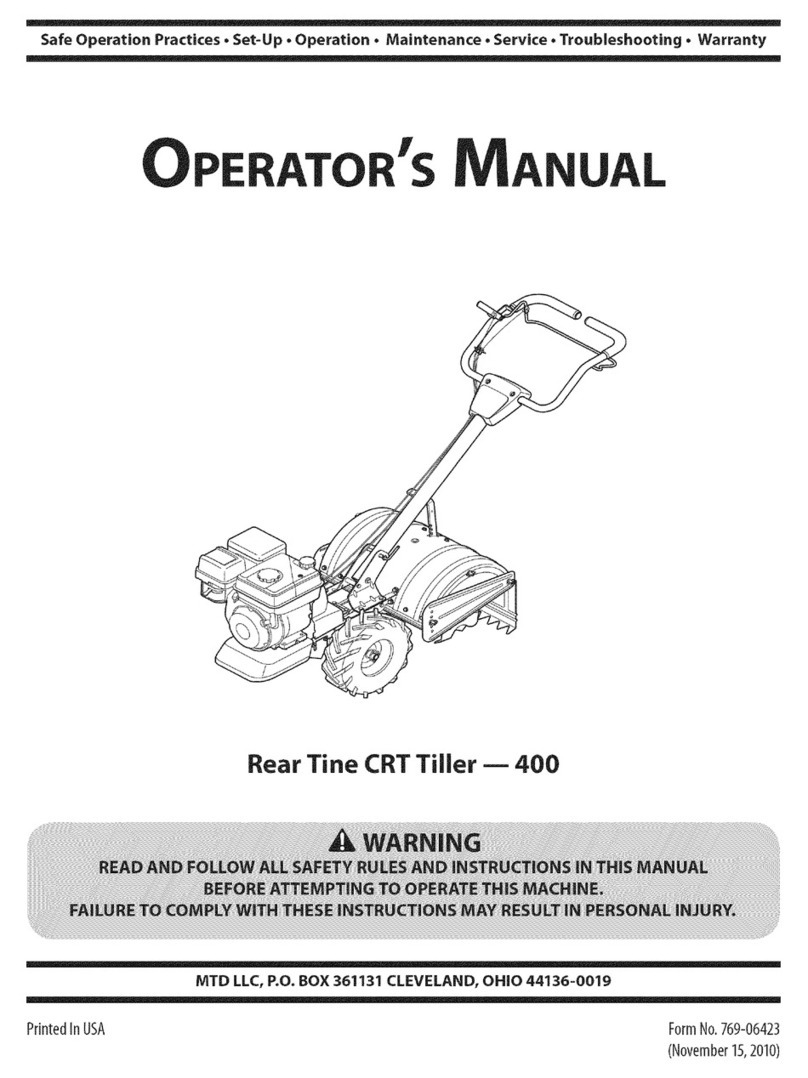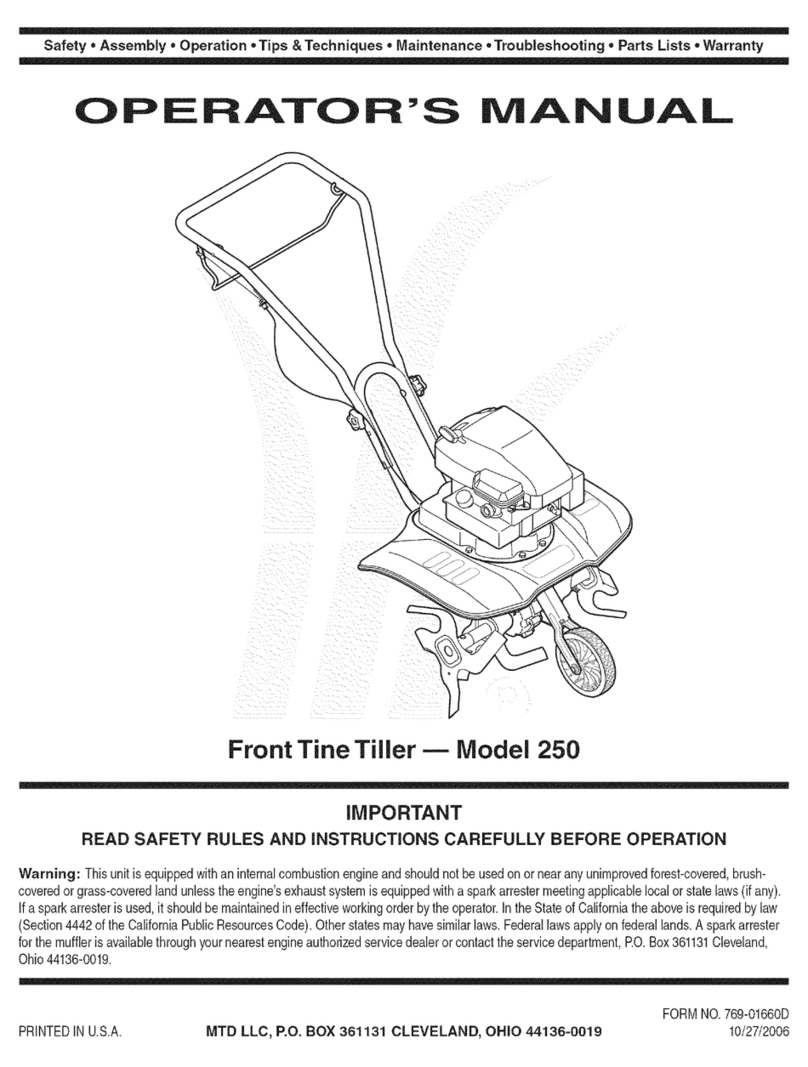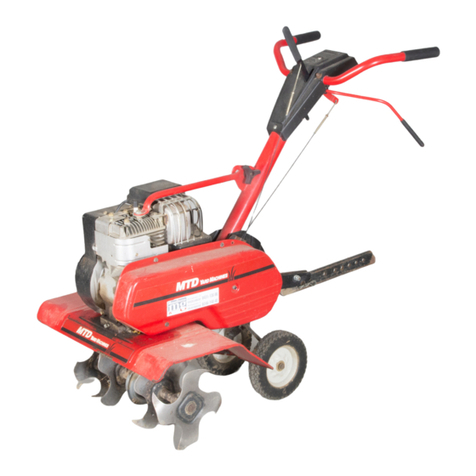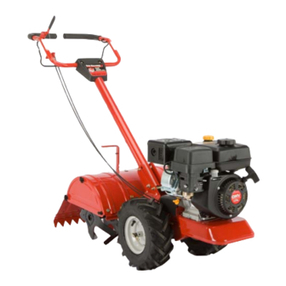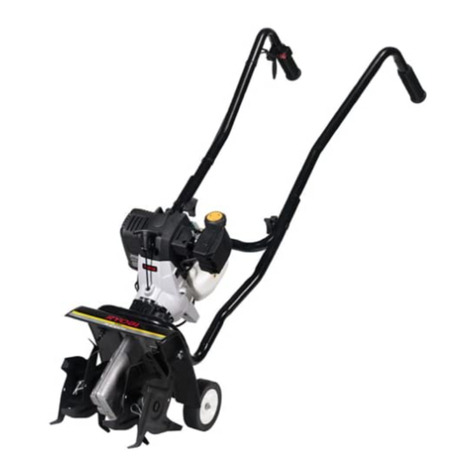
4
4. Keep bystanders, helpers, pets, and children at least 75 feet
from the machine while it is in operation. Stop the machine if
anyone enters the area.
5. Be careful when tilling in hard ground. The tines may catch in
the ground and propel the tiller forward. If this occurs, let go of
the handle bars and do not restrain the machine.
6. Exercise extreme caution when operating on or crossing gravel
surfaces. Stay alert for hidden hazards or traffic. Do not carry
passengers.
7. Never operate the machine at high transport speeds on hard or
slippery surfaces.
8. Exercise caution to avoid slipping or falling.
9. Look down and behind and use care when in reverse or pulling
machine towards you.
10.Start the engine according to the instructions found in this
manual and keep feet well away from the tines at all times.
11. After striking a foreign object, stop the engine, disconnect the
spark plug wire and ground against the engine.Thoroughly
inspect the machine for any damage. Repair the damage before
starting and operating.
12.Disengage all clutch levers (if fitted) and stop engine before you
leave the operating position (behind the handles). Wait until
the tines come to a complete stop before unclogging the tines,
making any adjustments, or inspections.
13.Never run an engine indoors or in a poorly ventilated area.
Engine exhaust contains carbon monoxide, an odorless and
deadly gas.
14.Muffler and engine become hot and can cause a burn. Do not
touch.
15.Use caution when tilling near fences, buildings and under-
ground utilities. Rotating tines can cause property damage or
personal injury.
16.Do not overload machine capacity by attempting to till soil to
deep at to fast of a rate.
17. If the machine should start making an unusual noise or
vibration, stop the engine, disconnect the spark plug wire and
ground it against the engine. Inspect thoroughly for damage.
Repair any damage before starting and operating.
18.Keep all shields, guards and safety devices in place and operat-
ing properly.
19.Never pick up or carry machine while the engine is running.
20.Use only attachments and accessories approved by the
manufacturer. Failure to do so, can result in personal injury.
21.If situations occur which are not covered in this manual, use
care and good judgment. Contact Customer Support or your
authorized dealer.
Maintenance & Storage
1. Keep machine, attachments and accessories in safe working
order.
2. Allow a machine to cool at least five minutes before storing.
Never tamper with safety devices. Check their proper operation
regularly.
3. Check bolts and screws for proper tightness at frequent
intervals to keep the machine in safe working condition. Also,
visually inspect machine for any damage.
4. Before cleaning, repairing, or inspecting, stop the engine and
make certain the tines and all moving parts have stopped.
Disconnect the spark plug wire and ground it against the engine
to prevent unintended starting.
5. Do not change the engine governor settings or over-speed the
engine. The governor controls the maximum safe operating
speed of the engine.
6. Maintain or replace safety and instruction labels, as necessary.
7. Follow this manual for safe loading, unloading, transporting, and
storage of this machine.
7. Never store the machine or fuel container inside where there
is an open flame, spark or pilot light such as a water heater,
furnace, clothes dryer etc.
8. Always refer to the operator’s manual for important details if the
machine is to be sotred for an extended period.
9. If the fuel tank has to be drained, do this outdoors.
10.Observe proper disposal laws and regulations for gas, oil, etc.
to protect the environment.
11. According to the Consumer Products Safety Commission
(CPSC) and the U.S. Environmental Protection Agency (EPA),
this product has an Average Useful Life of seven (7) years, or
60 hours of operation. At the end of the Average Useful Life, buy
a new machine or have the machine inspected annually by an
authorized service dealer to ensure that all mechanical and
safety systems are working properly and not worn excessively.
Failure to do so can result in accidents, injuries or death.
Do not modify engine
To avoid serious injury or death, do not modify engine in any way.
Tampering with the governor setting can lead to a runaway engine
and cause it to operate at unsafe speeds. Never tamper with
factory setting of engine governor.
Notice regarding Emissions
Engines which are certified to comply with California and federal
EPA emission regulations for SORE (Small Off Road Equipment)
are certified to operate on regular unleaded gasoline, and may
include the following emission control systems: Engine Modification
(EM) and Three Way Catalyst (TWC) if so equipped.
